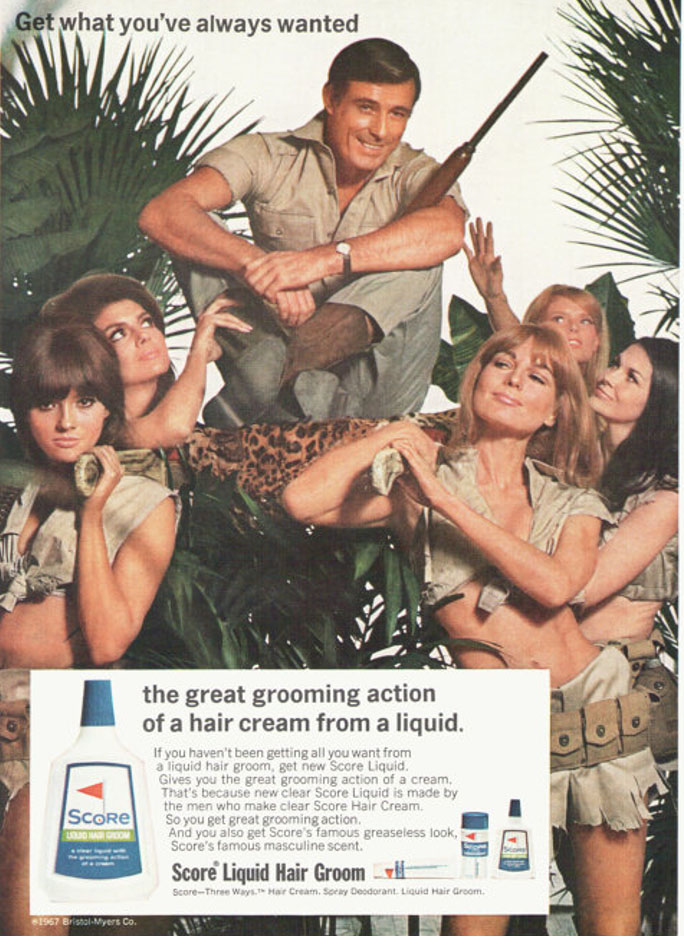
Textual Analysis:
- Strapline is “Get what you’ve always wanted”. This immediately attracts the customers attention
- Big slogan above a long (repetitive) paragraph.
- 1 main male.
- 5 main female models, are shown in awe of the man, supposedly because of the product.
- The setting that the models are in is supposed to be Africa, this is evident due to the leaves behind, and safari-style clothes.
Representation
The strapline ‘Get what you’ve always wanted’ appeals to the aspirer, who wants to achieve greater things. The advert also implies that wearing its product will help you gain the sexual attention of young women, which appeals specifically to heterosexual men. Also, by choosing to use a group of white people in Africa, the product appeals to 1960s imperialists who are still clinging to the ideals of the recently collapsed British Empire.
There is no doubt that the audience response to this product will have changed quite a bit over time. Firstly, the lack of diversity in the advert is now laughable (especially when you consider that the advert is supposed to be set in an African safari). Also, the sexual politics of the advert now seem rather questionable. The man in the advert looks around 40-50 years old, and yet he is being carried around by women who look as if they’ve just turned 20 years old. The addition of a gun as a phallic symbol also hasn’t aged well, as it implies that ‘to be a real man’ men have to be powerful and violent.
Also, by implying that the group had sex, the advert is trying to appeal to the ideals of ‘the second wave of feminism’ which created a larger acceptance of birth control, divorce, abortion and homosexuality.
Clearly, the advert is trying to use sex to sell their product. This is an extremely common strategy even today, but the products explicit way of using it hasn’t exactly aged well compared to today’s modern standards.


